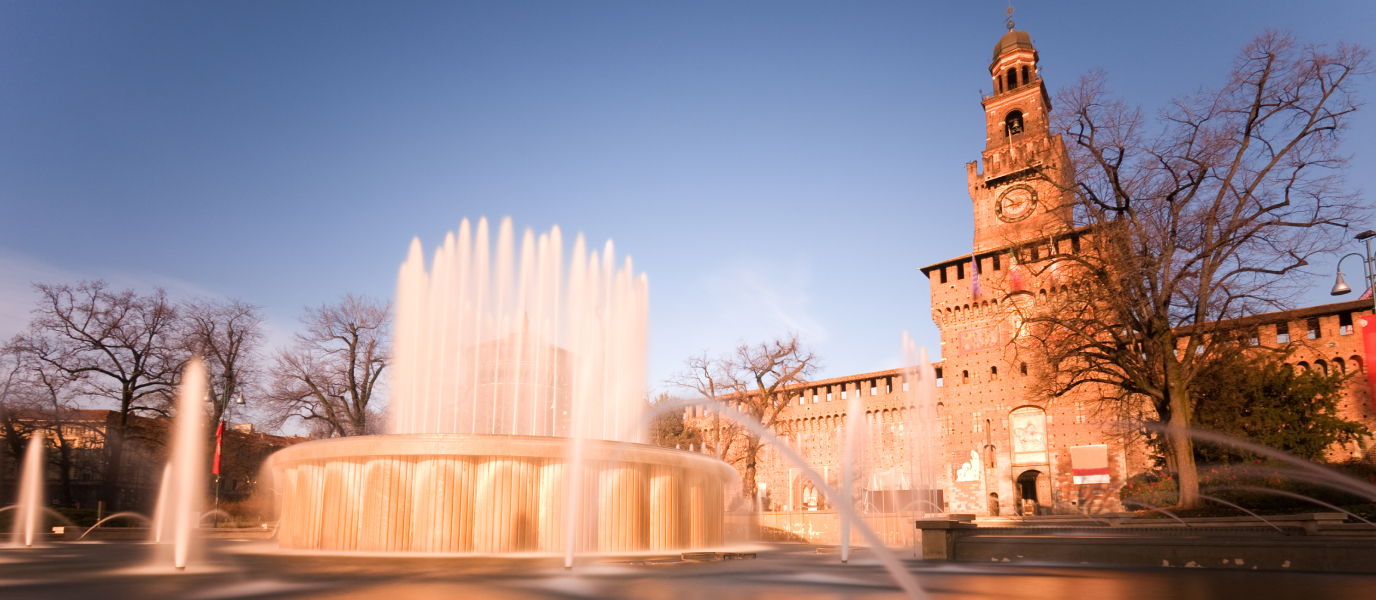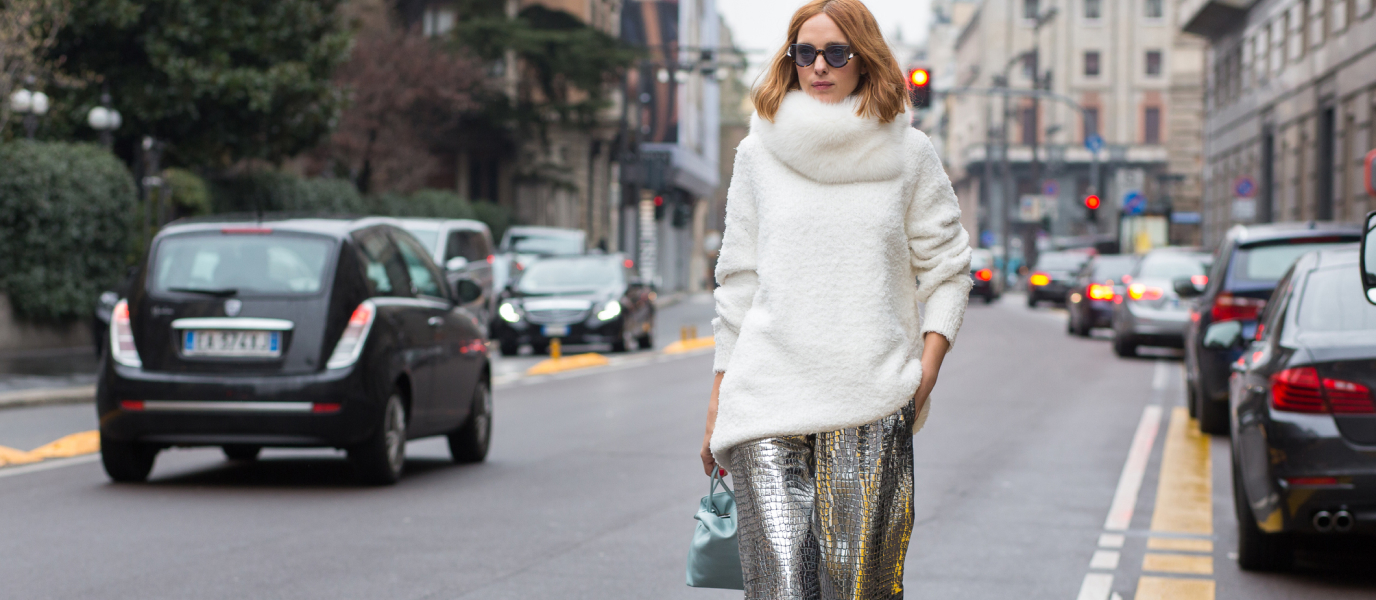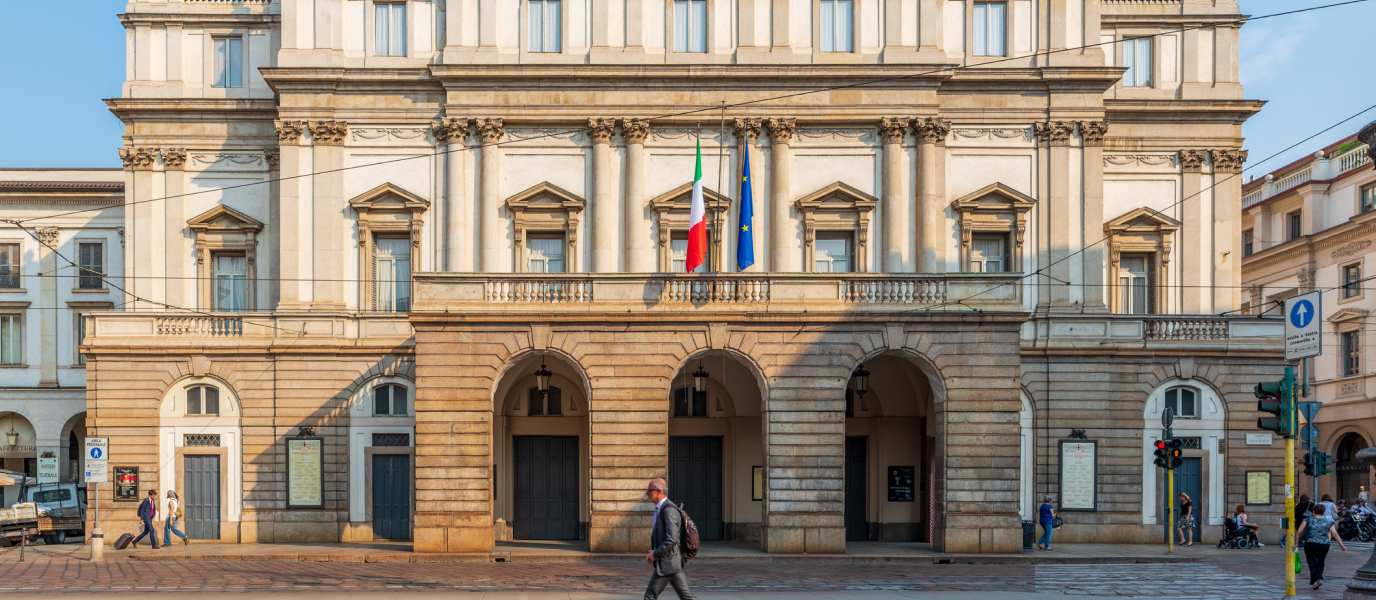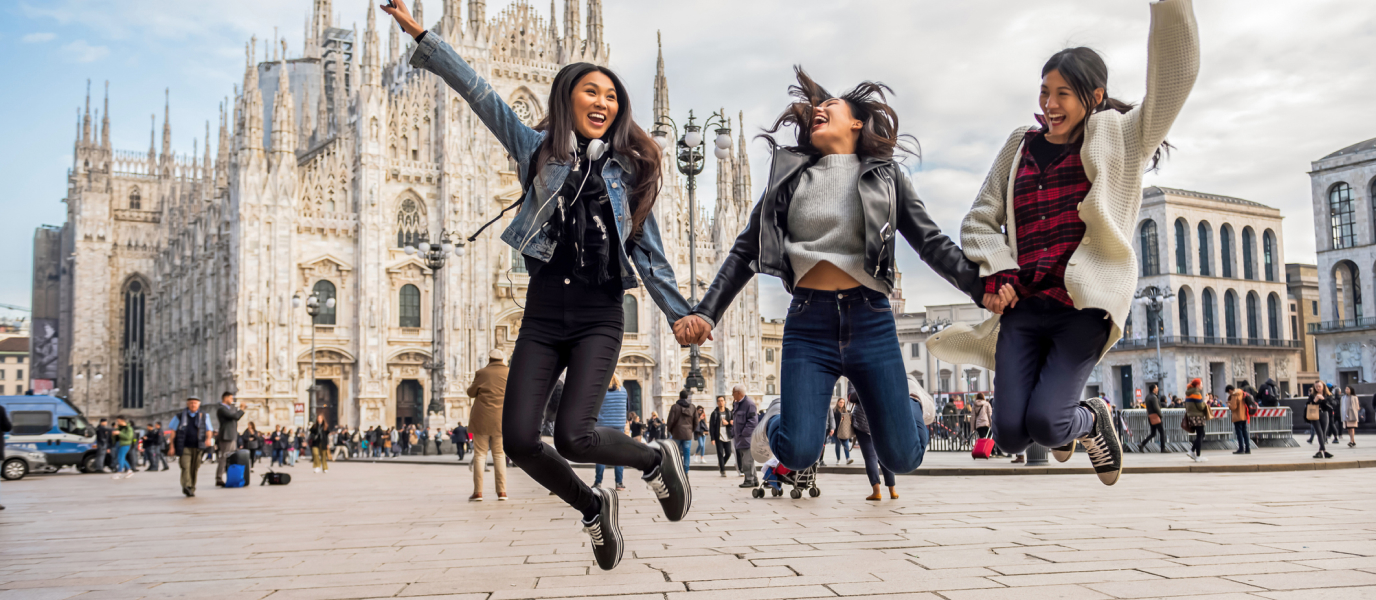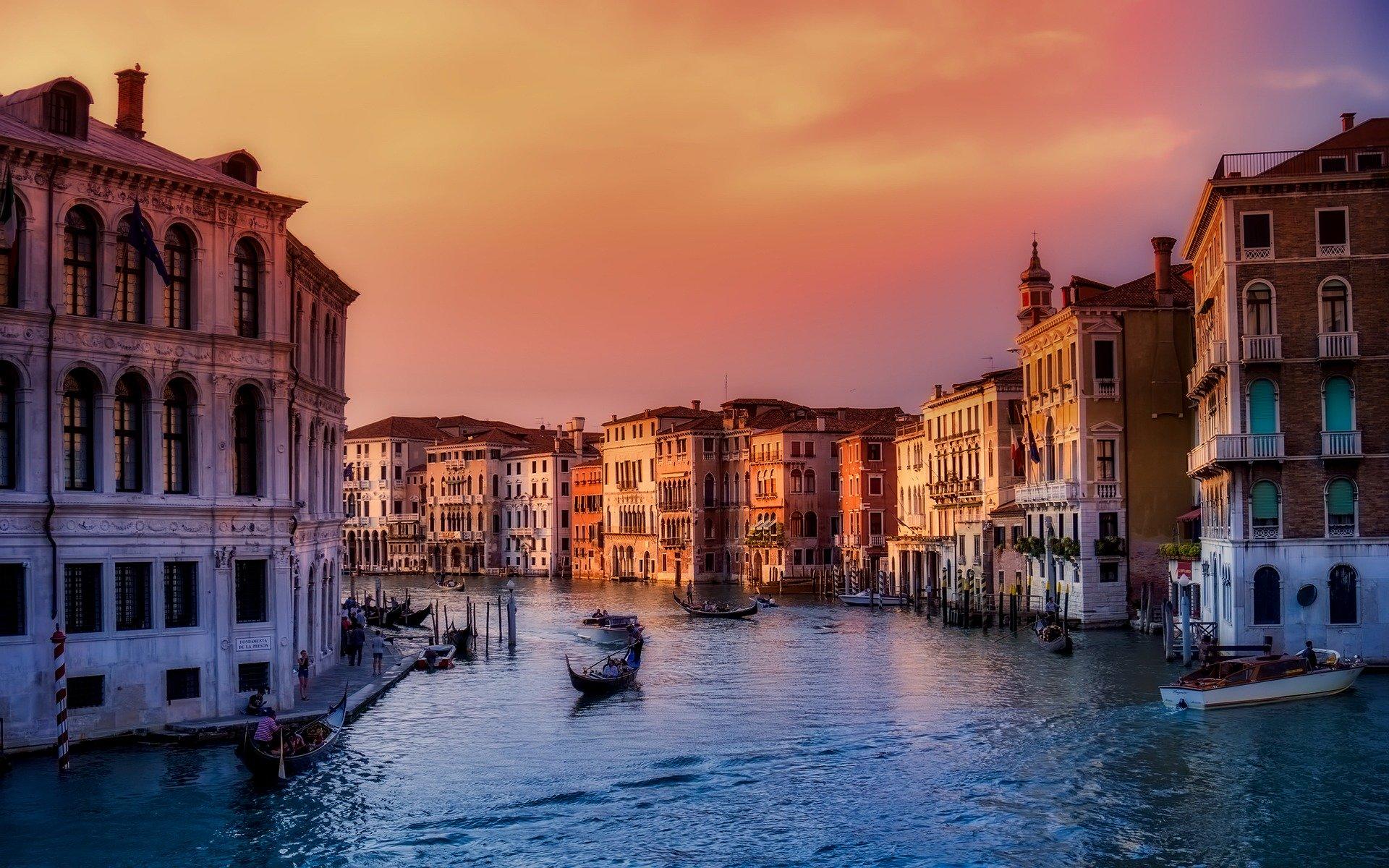Milan is one of northern Italy’s most magnificent destinations. The capital of the Lombardy region, it is home to iconic sights such as the Duomo, its cathedral; works of art including The Last Supper by Leonardo da Vinci; and emblematic cultural buildings, such as La Scala. Vestiges of the historic legacy that combine (and contrast) with the modernity of the skyscrapers and with the innovation and extravagance that reign on the streets that are home to art galleries and shops belonging to the world’s most prestigious fashion houses.
The wide availability of low-cost flights from many European cities and the option of travelling by train from different parts of Italy make Milan an ideal destination for a few days’ break at any time of year. In addition, lovers of Italian cuisine can avail themselves of a rich gastronomical offer.
What can you see in Milan in a day or several days? The following list includes information about 21 places you won’t want to miss:
Milan Cathedral
Duomo is the Italian word for ‘cathedral’. This is what everyone calls Milan’s cathedral, which stands in the square of the same name, the Piazza del Duomo, which, as the years have passed, has established itself as the hub of Milanese life.
Flanked by historic edifices such as the Galleria Vittorio Emanuele II and the Royal Palace, the Duomo makes a striking impact with its impressive neo-Gothic style façade covered in white marble with hints of pink. Building began in the fourteenth century, but the cathedral was not completed until 1965. This is one of the world’s largest Catholic cathedrals: it can hold up to 40,000 people.
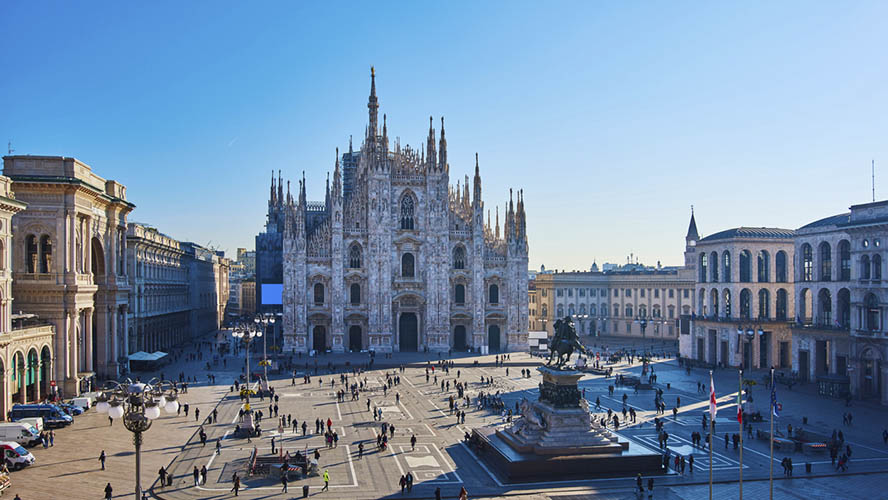
San Siro
The two most important football clubs in this trendsetting city, AC Milan and Inter Milan, have shared one of the world’s most famous stadiums since 1947: San Siro or Giussepe Meaza (its official name, after a historic Italian footballer). With capacity for 85,000 spectators, the stadium has a distinctive external appearance: its three cylindrical towers, which are similar to those of the Santiago Bernabéu stadium — and its roof.
This Lombardy stadium is in the district of San Siro — hence its name — about seven kilometres from the centre of Milan. If you want to attend a game or go for a guided tour, you can get to the stadium on the metro or by tram.
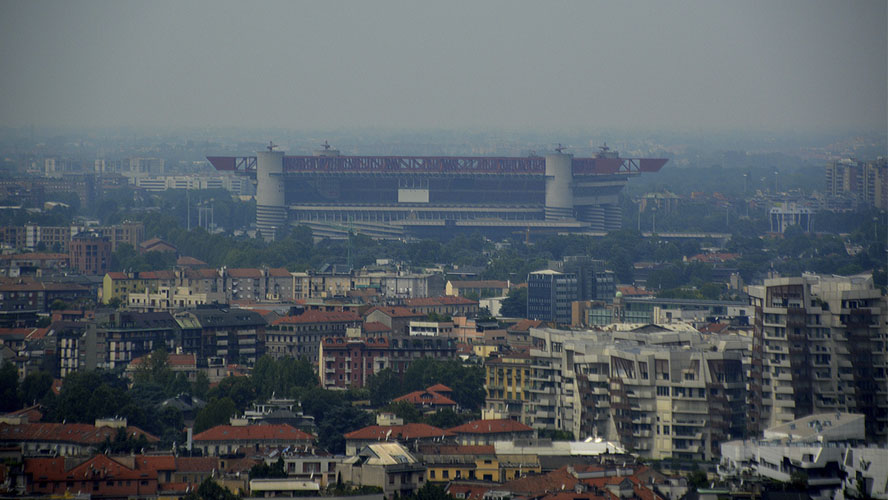
Santa María delle Grazie
One of history’s greatest geniuses, Leonardo Da Vinci, left the city of Milan some of his most important artistic and engineering works. Il cenacolo vinciano (The Last Supper, in English is, together with the Mona Lisa, the artist’s most renowned and admired painting on an international level. In the refectory attached to the basilica of Santa Maria delle Grazie, Da Vinci painted this great mural which has inspired intrigue and wonder since the Tuscan genius completed it at the end of the fifteenth century.
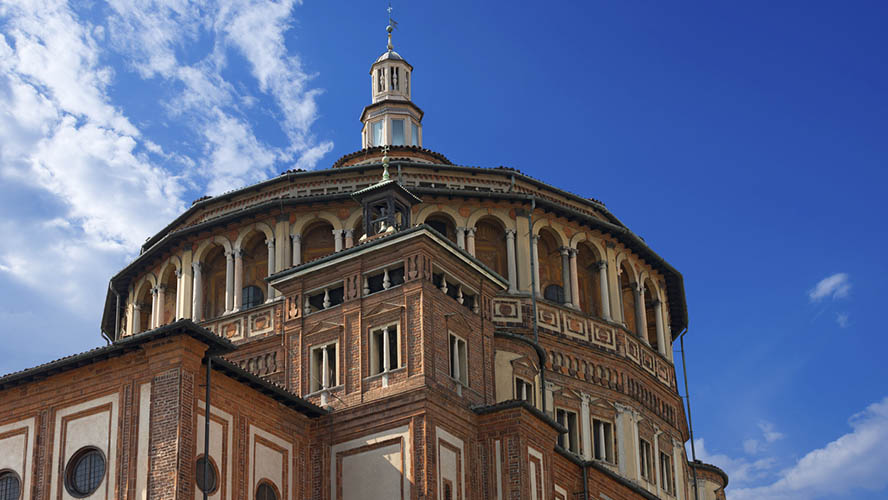
Castello Sforzesco
When travellers land in Milan, they arrive with possibly two things in mind: a visit to the Duomo and the chance of getting a ticket for a close-up look at Leonardo Da Vinci’s The Last Supper. But then, as happens on any trip, they discover so many important and beautiful corners and monuments.
This can certainly be said of Castello Sforzesco, a 600-year-old fortress that houses an enormous castle built in red brick, with remarkable and exquisite medieval towers. A parade ground and six museums lie inside. You can reach this imposing and dazzling fortress, which is not far from the Piazza del Duomo, simply by walking from Via Orefici or Via Dante.
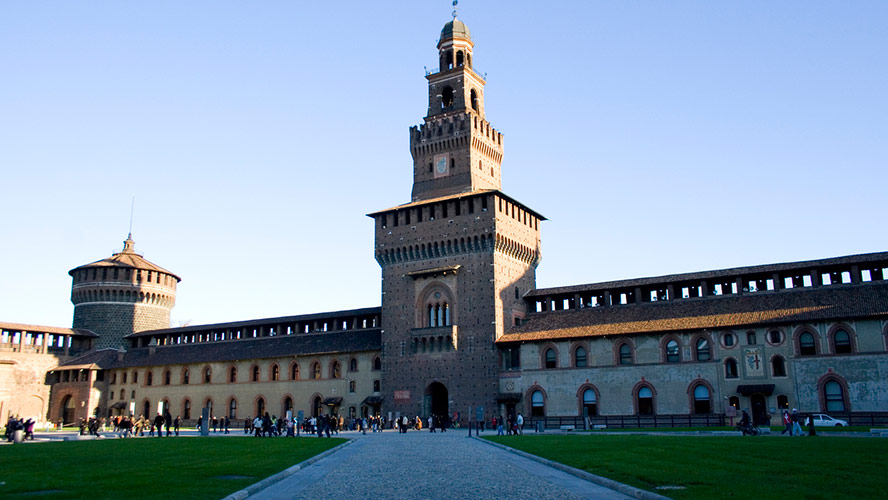
Milan Central Station
Just like New York, where the Grand Central Terminal is a tourist attraction, Milan has Stazione di Milano Centrale (Milan Central Station in English), one of Europe’s oldest and grandest railway stations. Built between 1927 and 1931, the station combines Modernista and Art Deco elements with a wealth of monuments, including not a few sculptures from the period of Fascist rule under Benito Mussolini.
Over 300,000 people pass through Milan Central Station every day, arriving from various Italian cities, but also from European cities including Berne, Geneva, Barcelona and Munich.
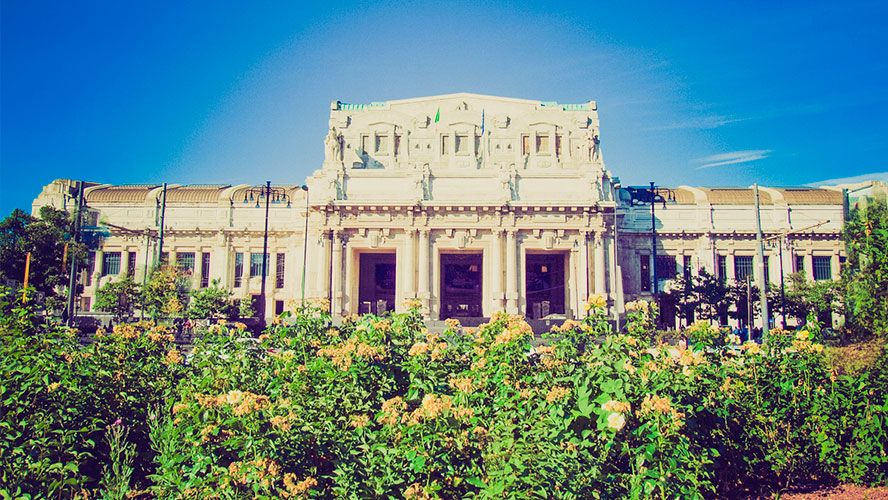
Teatro alla Scala
In Via Manzoni, one of Milan’s most famous streets, stands the Teatro alla Scala (popularly known as La Scala). It is one of the world’s greatest opera houses. It rose to fame almost as soon as it opened in 1778, when it began to draw the major Italian composers, attracted by its superb acoustics.
The opera season begins annually on the 7th of December, when the city celebrates the Patron Saint of Milan, San Ambrosio.
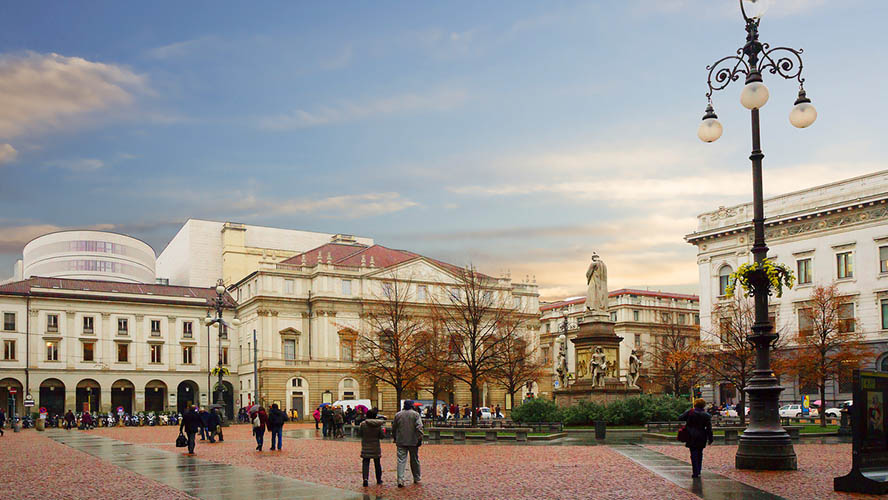
Bosco Verticale de Milán
In Milan’s financial district, just over 2 kilometres’ walk from the Piazza del Duomo, we can find two very tall adjoining buildings (110 and 76 metres), covered in plant life. Their name, Bosco Verticale, derives from the fact that they are clothed in over 800 trees, as if they were a kind of vertical garden. They are an example of a new generation of sustainable architecture designed to fight against climate change.
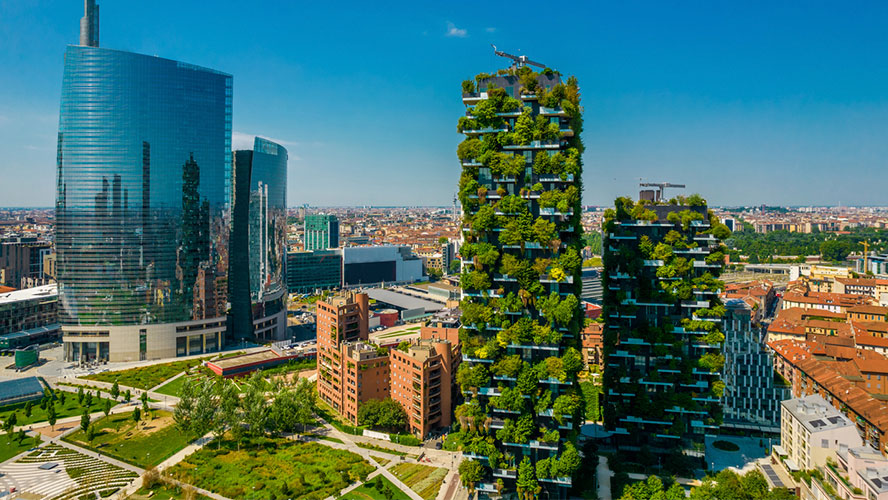
Galleria Vittorio Emanuele II
Just to the right of the main doors of Milan Cathedral, in the Piazza del Duomo, stands one of the two majestic archways leading into the Galleria Vittorio Emanuele II. Built between 1865 and 1877 in honour of Italy’s first King following unification, it is one of the oldest commercial art galleries in the world. If you have been to Naples, the name of this place may ring a bell, as there is a similar one in the south of Italy, Galería Umberto I.
It has an impressive interior, with a spectacular dome of crystal and steel that rises to a height of almost 50 metres. Travellers can enjoy something to eat and drink at Café Biffi, which dates back to 1867, and is one of the city’s oldest establishments — or they could admire the window displays in the luxury shops.
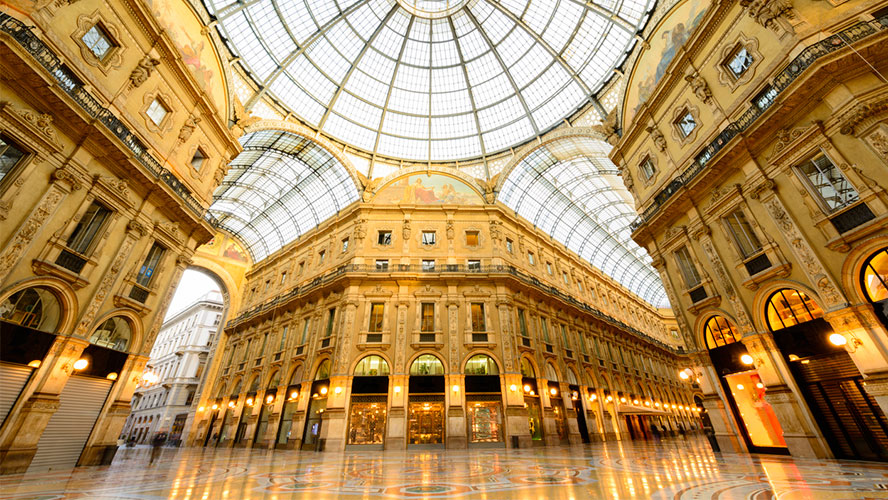
Pinacoteca de Brera
In common with cities such as Paris, London and Madrid, Milan boasts one of Europe’s most important art museums, the Pinacoteca di Brera. The Palazzo Brera, a Baroque-style building that takes its name from the bohemian neighbourhood of Brera where it is located, houses this museum displaying hundreds of works from the Quattrocentro up to the early avant-garde of the twentieth century. A delightful journey through Italian, French and Central European paintings that allows the visitor to trace the development of art down the centuries.
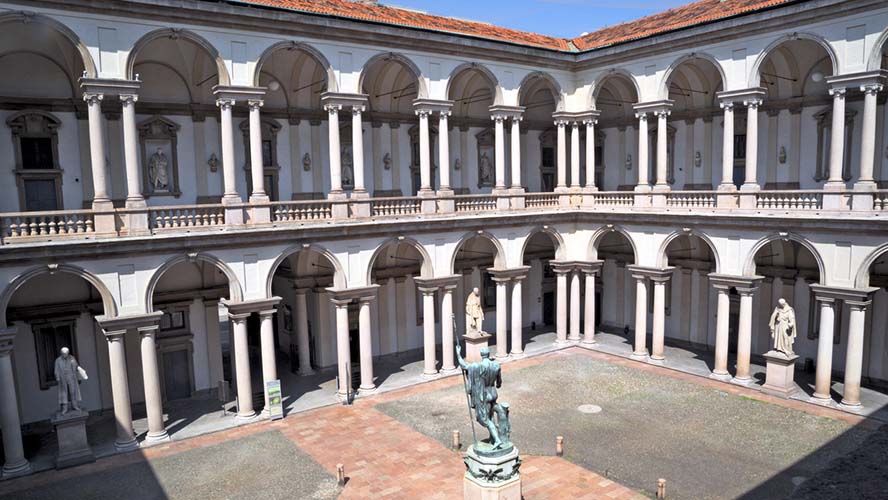
Sempione Park
Along with Castello Sforzesco, Milan has Sempione Park just as New York has Central Park, and London has Hyde Park. Sempione Park was built in 1890 to a design inspired by English fourteenth-century gardens which were famous recreations of idyllic pastoral scenes. Covering almost 50 hectares, it not only has trees, gardens and an artificial lake, but also buildings of interest to visitors by virtue of their beauty or their historic significance: The Triennale di Milan, the Acquario Civico, the Arena Civica, the Arco della Pace and the Torre Branca.
It is a lovely place to stroll, enjoy a picnic and even have a siesta in the shade of a tree on hot days.
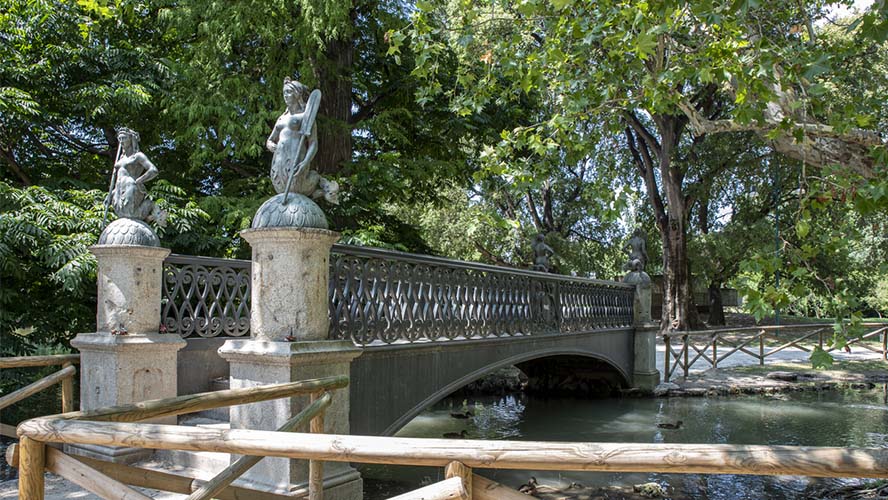
Monumental Cemetery of Milan
Ever since 1866, Milan has had an ‘open-air museum’, the final resting place of Milanese society’s most famous figures: the Cimitero Monumentale di Milano [Monumental Cemetery of Milan] Thanks to the beauty of its mausoleums — each one has to be approved before it can be built — it is considered one of Italy’s most attractive cemeteries. Travellers who visit this sacrosanct place can see obelisks, the tombs of historic figures such as Alessandro Manzoni and El Famedio, and a church known as the ‘Templo de la Fama’, which is the burial place of the most prestigious citizens of Milan.
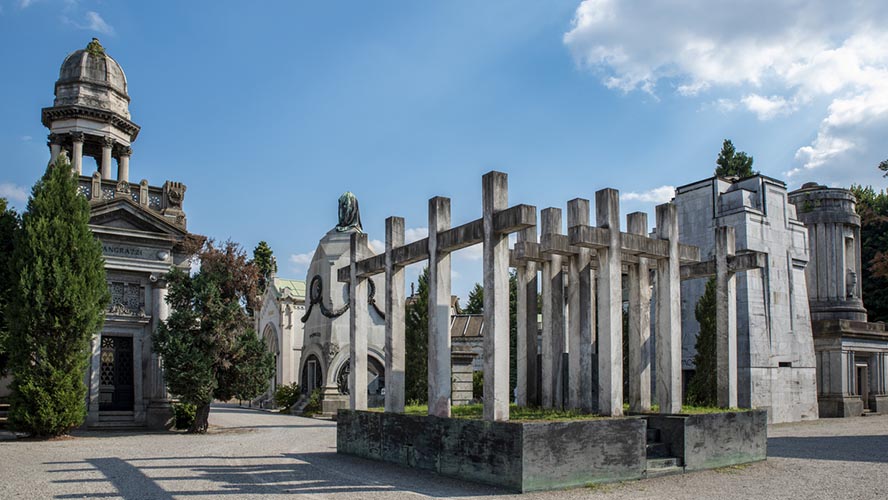
Piazza del Duomo
The Piazza del Duomo is the heart of the Lombard capital. It owes its name to the Duomo, the Cathedral of Milan. As well as being home to the city’s greatest monument, this emblematic, 17,000-m2 square offers visitors tourist attractions such as the majestic Vittorio Emanuele II gallery, the Royal Palace (Palazzo Reale or Palazzo del Arengario) and the Palazzo Carminati. In the centre of the square stands the monument to King Vittorio Emanuele II, an equestrian statue carved in bronze depicting the monarch in a battle.
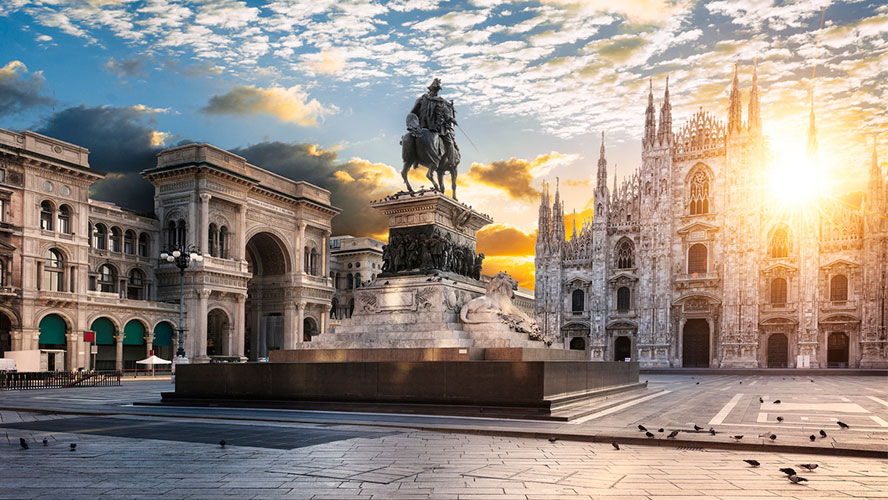
Piazza Gae Aulenti
Linked by a pedestrian walkway to the busy street named Corso Como, the Piazza Gae Aulenti is the sight that greets visitors who venture as far as this futuristic corner of Porta Nova. This spot marks the crossroads between Milan’s historic and financial districts.
The square, which opened in 2012, is bordered by grand buildings with a modern design, and in the centre there are a series of small jets of water that spurt out of the ground and spatter anyone who walks by and fails to skirt around them. If you look up, you will be surprised at the height of buildings such as the Unicredit Tower which, at 231 metres, is Italy’s tallest skyscraper.
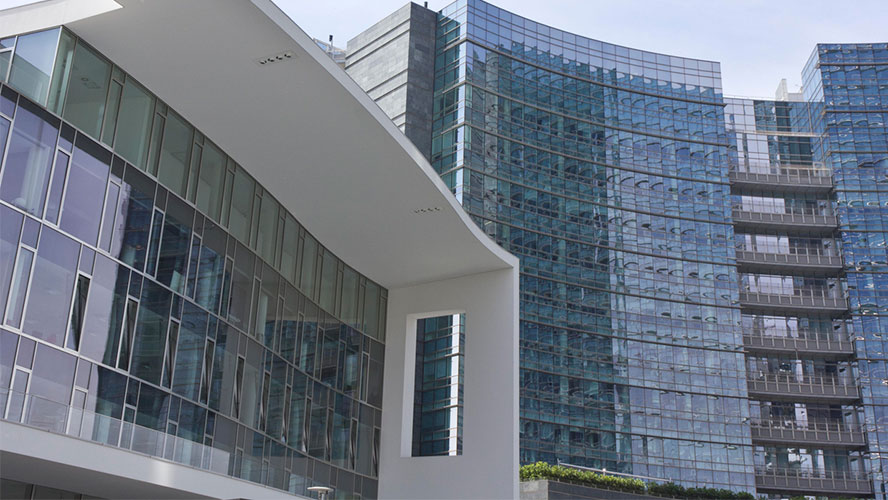
Pinacoteca Ambrosiana
Barely a five-minute walk from the Piazza del Duomo will bring you to the Pinacoteca Ambrosiana, in Piazza Pio XI. Many people consider this one of Milan’s most fascinating art museums, with works by artists of the calibre of Leonardo da Vinci, Titian, Caravaggio and Raphael.
This group of buildings includes the Biblioteca Ambrosiana, one Europe’s oldest libraries, whose collection makes it worthy to be considered one of the most important in the world. It holds over a million volumes including incunabula, manuscripts, drawings, etchings, and unique oddities.
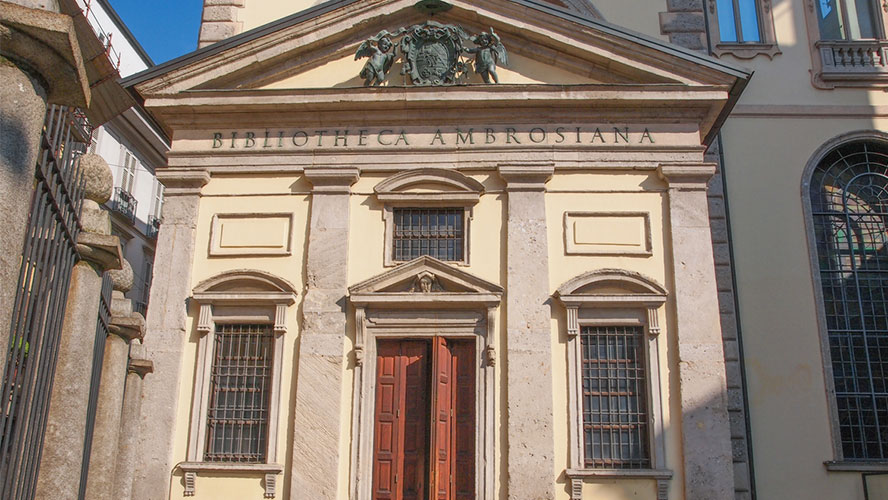
Corso Como
Corso Como is one of Milan’s most famous streets. It runs through the heart of the Lombard capital’s financial district, and has a buzzing ambience by day and by night. A place where you can eat, have a coffee, go shopping, or wait for nightfall and go out for a drink or a dance. This street has some of the finest, internationally renowned designer and fashion shops.
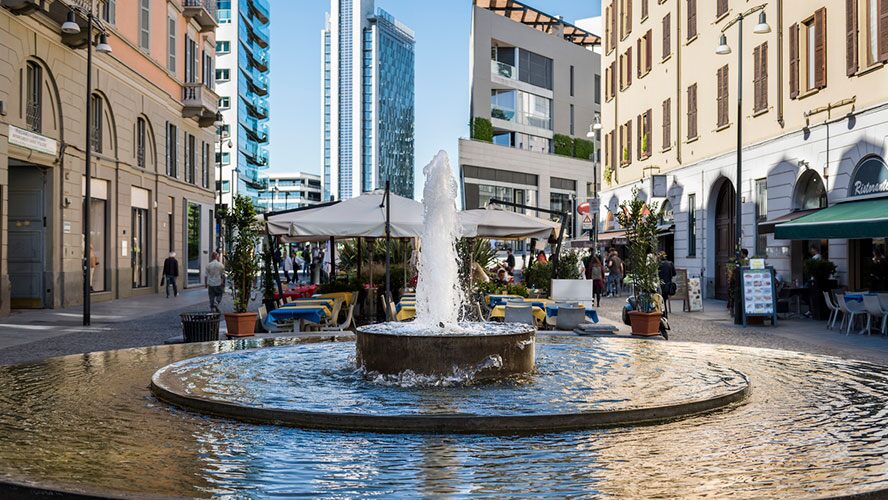
Piazza Mercanti
All of Milan’s most precious treasures are to be found in or around Piazza del Duomo. Ons such treasure is Piazza Mercanti, considered the best-preserved example of medieval Milanese architecture. It dates from 1228, and is home to five major historic buildings: the Palazzo de la Ragione, the Loggia degli Osii, the Palazzo dei Giureconsulti, the Palazzo dell Scuole Palatine, and Casa Panagirola.
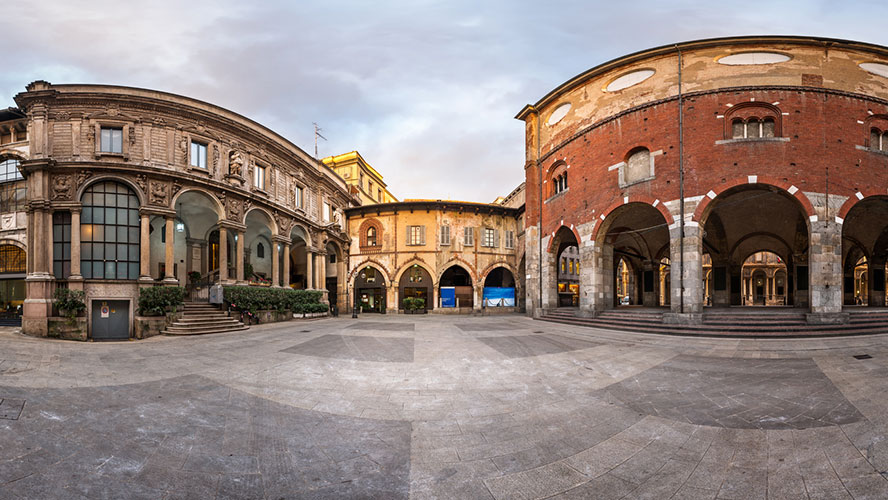
Arco della Pace
The Arco della Pace stands in the centre of Piazza Sempione, an extensive, circular esplanade that connects Corso Sempione with the park of the same name. This 25-metre-tall archway was built on the orders of Napoleon Bonaparte during the period of his political domination of Europe, but construction did not actually take place until some years later, in 1838.
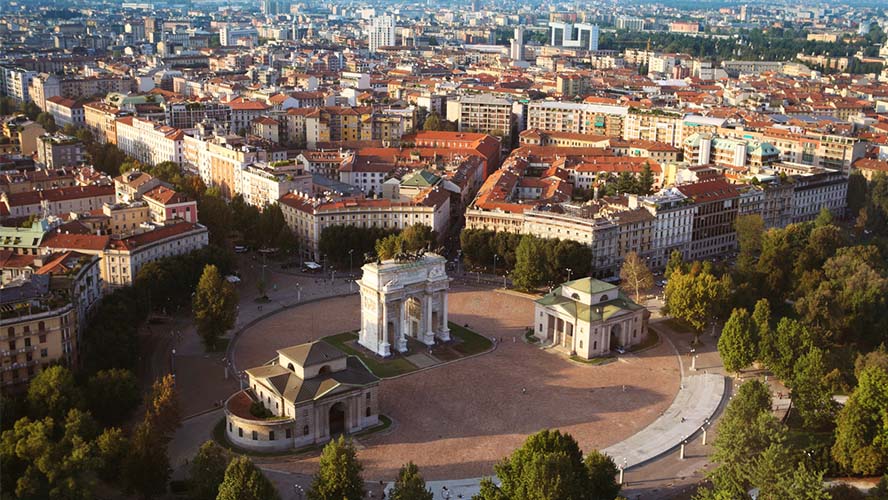
Basilica di Sant’Ambrogio
The Basilica di Sant’Ambrogio is considered to be one of the most characteristic of the Lombard Romanesque style, and also recalls Byzantine architecture. This ancient place of worship was founded in the fourth century A.D. on the orders of St. Ambrose, with the plan that it would house the remains of Christianity’s first martyrs, executed during the last centuries of the Roman Empire.
Saint Ambrose is the patron saint of Milan. His body, covered in lavish fabrics, rests in the Chapel of the Saints. Along with the Duomo, the Basilica di Sant’Ambrogio is the most important church in the city, and one of the most special and symbolic for followers of Christianity.
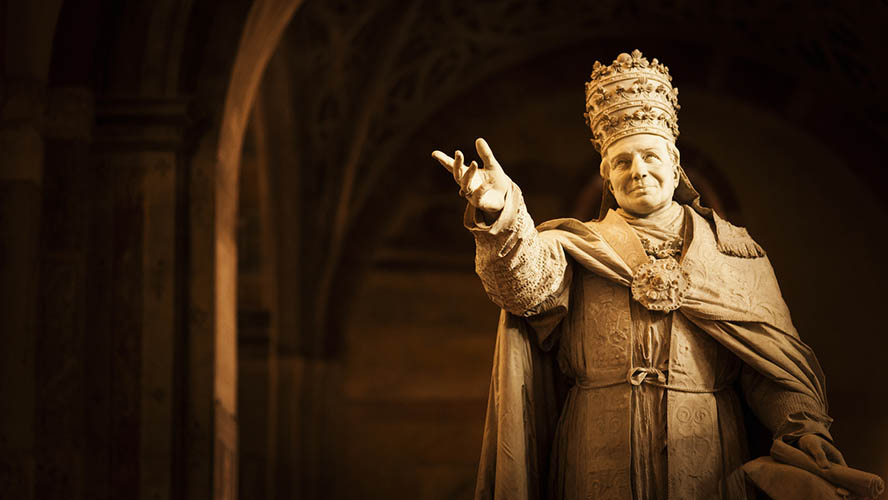
Royal Palace of Milan
The Royal Palace of Milan (Palazzo Reale, in Italian) is one of the city’s most iconic buildings and, together with the Duomo and Galleria Vittorio Emanuele II, is one of the Piazza del Duomo’s principal historic attractions. Once the centre of power in the region, this edifice has become the most important museum in the capital of Lombardy: it holds over 1,500 pieces from various periods, and includes works by Leonardo Da Vinci, Monet and Picasso.
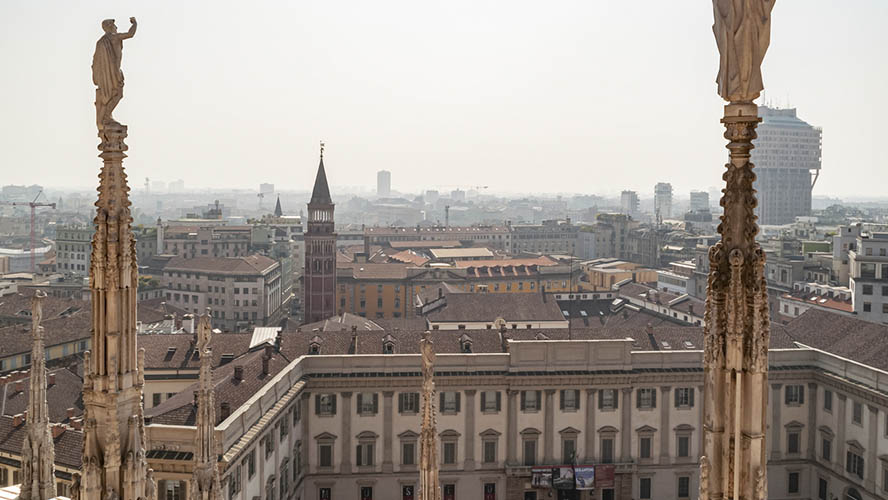
Casa Galimberti
In the city of Milan, monuments and buildings of different ages and styles co-exist in harmony. One of the most striking is Casa Galimberti, an example of the Italian Liberty style, the Italian version of Art Nouveau or the Modernista movement. It stands in Via Marcello Malpighi.
It was designed by the architect Giovanni Battista Bossi, and built between 1903 and 1905. Its outstanding features are its colourful tiles and mural mosaics.
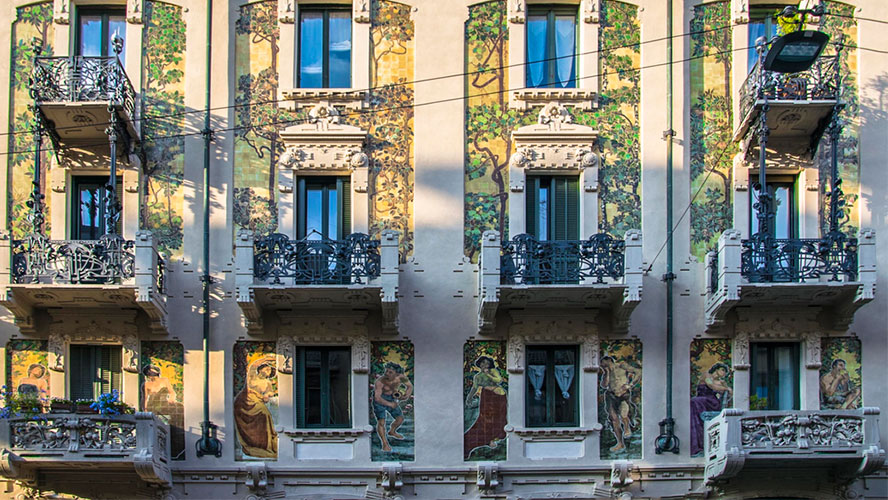
Where to eat in Milan
In the capital of Lombardy there is a wide gastronomic offer, so any visitor looking for a good place to eat in Milan is spoilt for choice. There are restaurants with two Michelin Stars, such as the Enrico Bartolini al Mudec (Tortona, 56), or you could opt for somewhere cheaper and more traditional, such as Trattoria Madonnina (Gentilino, 6). Alternatively, you could enjoy a Milanese snack somewhere trendy, like the Fonderie Milanesi (Giovenale, 7), a former factory which has been transformed into one of Milan’s most hipster eateries.




































































